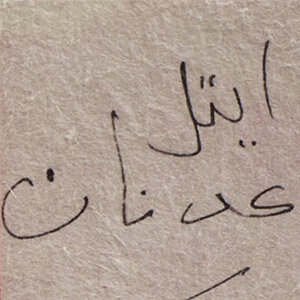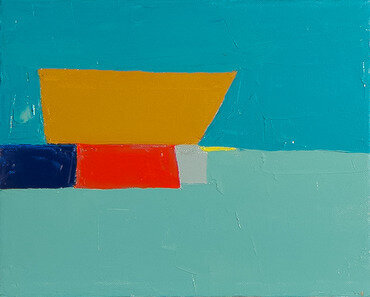


Last updated on Tue 23 December, 2014


LIBERATED SUBJECTS : PIONEERS
December 23, 2014 - January 10, 2015
ARTSPACE DE 11 LIJNEN
The Foundation De 11 Lijnen is proud to present the first in a series of two exhibitions that explore the themes of creative freedom and identity. At the heart of the project lies one of the most defining forces of the twenty-first century: the pursuit and expression of individuality in an increasingly homogenous and interconnected world.
The work of South African-born artist Ernest Mancoba (1904-2002) is central to both exhibitions. Mancoba, who left Africa to study art in Paris in 1938, infused modern European art with a unique African spirit. One of the founding members of the CoBrA group, his unique style is characterised by subtle colours, dynamic compositions and diffuse, enigmatic forms. Liberated Subjects: Pioneers presents a selection of Mancoba’s paintings and drawings from the 1970s, and explores the artist’s deep understanding of African culture. In the words of Rasheed Araeen: ‘With Mancoba, the place of Africa in modernity is no longer that of an appropriated object but that of a liberated subject ... Africa’s place is no longer peripheral to the mainstream history of modernism but central within it.’ 1 Yet the horizons of the project are much wider. Pioneers looks beyond Africa to consider the work of three living women artists from Mancoba’s generation who, like him, were born in lands far removed from the main thrust of modernism. Relocating to Europe and America in order to engage with their contemporaries, they were amongst the first to interpret the aesthetics of their respective countries through the medium of Western abstraction.
Etel Adnan (b. 1925, Beirut) studied philosophy in Paris and New York in the 1950s. Both a writer and an artist, Adnan has often addressed the political and personal dimensions of violence, specifically the Lebanese civil war, in her poetry and prose. While her vivid, small-scale, abstract landscapes make less explicit references to political and social issues, they nevertheless reflect Adnan’s experience of exile from familiar places, her intense inner life and profound admiration for nature. Mount Tamalpais, north of San Francisco (where the artist lives), is a frequent source of inspiration. Adnan also makes accordion-folded books, or leporellos, in which she combines both words and images.
Monir Farmanfarmaian (b. 1924, Iran) trained as an artist in New York in the 1940s and 1950s and developed a distinctive visual approach that combines traditional Iranian motifs and techniques – reverse glass painting, mirror mosaics and the principles of Islamic geometry – with elements of Western modernism. Her meticulously crafted, wall-mounted panels and freestanding sculptures are dazzling architectural compositions that play on surface texture, refracted light and colour. Farmanfarmaian is also known for her intricate, multi-layered drawings that, like her sculptural works, present a complex synthesis of ancient geometric forms and contemporary aesthetics.
Painter Carmen Herrera (b. 1915, Cuba) divided her time between France and Cuba throughout the 1930s and 1940s. Originally trained as an architect, she studied art in New York (1943–45), before exhibiting four times at the Salon des Réalités Nouvelles, Musée d’Art Moderne de la Ville de Paris (1949–53). Grounded in the languages of both Latin American and Western abstraction, Herrera has consistently employed hard-edged, geometric forms and radiant combinations of two, occasionally three colours, to graphically delineate space and form. Herrera’s oeuvre, which spans the last six decades, has recently achieved worldwide recognition.
Hans Ulrich Obrist’s in-depth interviews with the four artists will be published in the accompanying exhibition catalogue.
The second exhibition, Liberated Subjects: Present Tense, opens in April 2015. In this presentation, Ernest Mancoba’s oeuvre provides the historical counterpoint to a selection of works by a younger generation of African artists. Recognising the reality of contemporary African art as an ‘atomised, dynamic and geographically imprecise set of practices’,2 Present Tense looks at the urgent issues of globalisation and identity, and the legacies of colonialism, nationalism and modernity.
Ernest Mancoba, Etel Adnan, Monir Farmanfarmaian, Carmen Herrera
Join us in our endless discovery of modern and contemporary Arab art